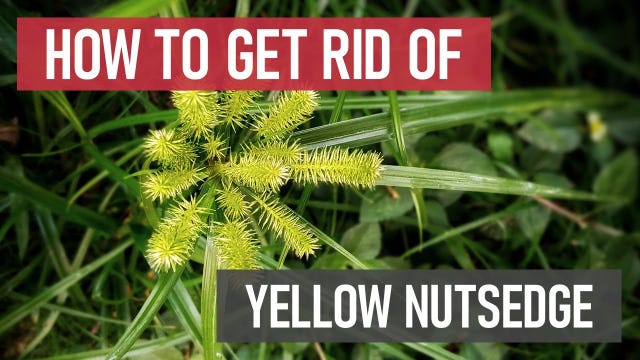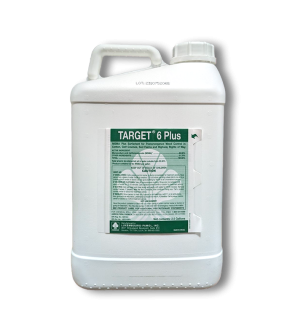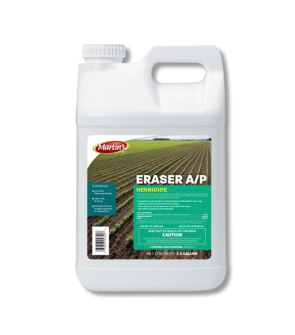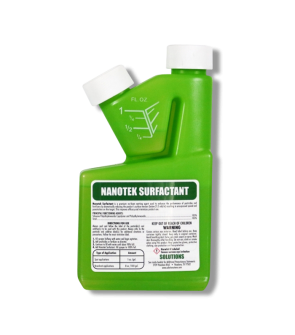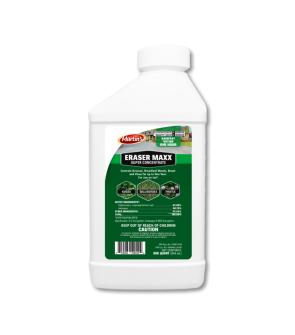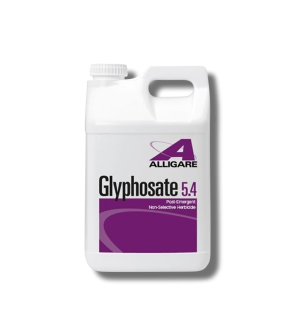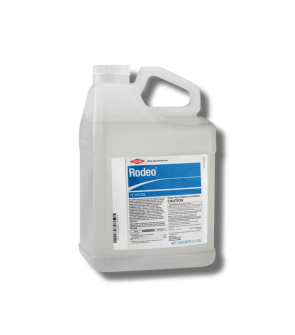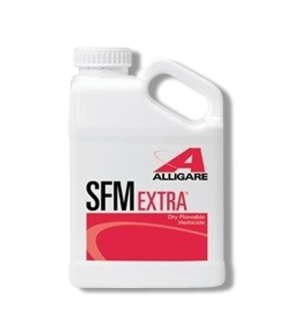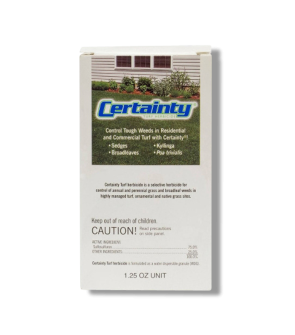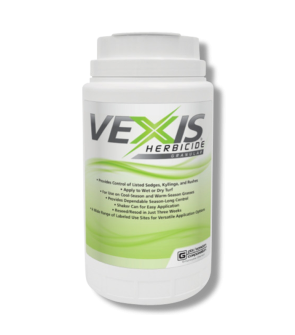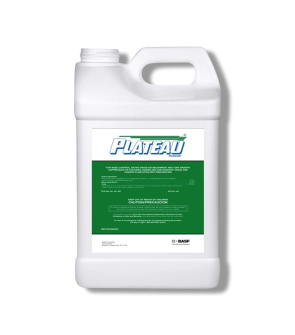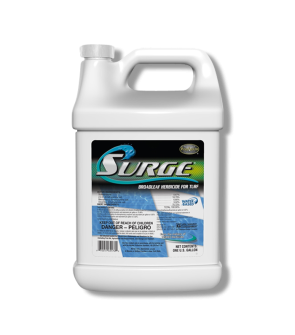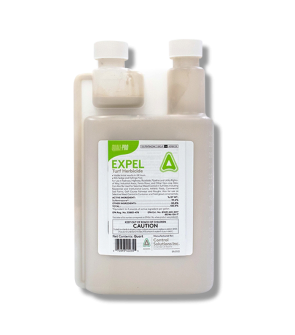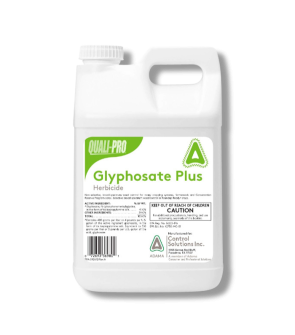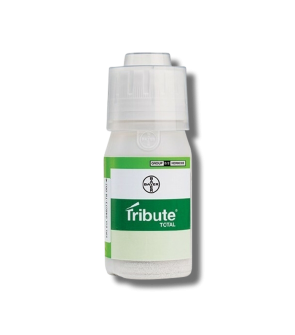Gain access to personalized product screening, the best pricing, rewards, and more!
Most Effective Products
Yellow Nutsedge Control: How To Get Rid of Yellow Nutsedge
This page is a general DIY guide for controlling yellow nutsedge. Using the recommended products and methods, you can control yellow nutsedge. Follow this DIY article and use the recommended products, and we guarantee 100% control of yellow nutsedge.
Yellow nutsedge, also called chufa, rush-nut, yellow nutgrass, northern nutgrass, tiger nut, earth almond, coco sedge, or chufa sedge, is a perennial weed that commonly grows on lawns and is known to spread quickly once established in a yard. This weed is well-known for its ability to colonize poorly drained or constantly wet areas and will also flourish in hot, dry areas.
The yellow nutsedge comes into the yard from seed, and once it's established, it produces little nuts under the ground. These nuts are attached to the end of underground stems (rhizomes), which aid in its rapid spread.
Yellow nutsedge thrives during the hottest period of summer. In northern areas, it typically emerges in late April or May and continues growing until the first frost of the fall. The frost typically kills the plant above ground, but the underground tubers are capable of surviving in the soil, where they will remain dormant and then re-emerge in the spring, making yellow nutsedge a reoccurring problem.
If you have a yellow nutsedge problem on your lawn, we can help. Our DIY yellow nutsedge treatment guide, put together by our lawn care experts, will show you how to use our professional herbicide recommendations to get rid of yellow nutsedge quickly and affordably.
Identification
Before you can carry out yellow nutsedge control, you need to make sure the weed you are dealing with is, in fact, yellow nutsedge and not some other weed. Knowing what yellow nutsedge looks like is critical because misidentification can lead to using the wrong treatment products, costing you time and money.

- Yellow Nutsedge is a perennial sedge that forms from rhizomes and tubers, which may reach 8-32 inches tall.
- The leaf blades are waxy, yellow to green in color, hairless, and have a prominent ridge along the midvein. Leaves will gradually taper to a pointed tip. They are also produced in sets of three from the base of the plant. Stems are erect and unbranched with a triangular cross-section.
- When in bloom, yellow nutsedge develops yellow-green to tan-colored flowers (spikelets) at the end of a single stem. These inflorescences arise in terminal clustered spikelets, giving the plant an umbel-like appearance.
Use our description and image above to help you to identify yellow nutsedge on your lawn. If you are having trouble identifying the weed, contact us and we will correctly identify the plant for you and offer herbicide product recommendations for control.
Inspection
Once you have confirmed that the weed you are dealing with is yellow nutsedge, you can move on to inspection. During this phase, you will locate the areas where yellow nutsedge is growing and observe the conditions that may allow it to thrive. This will help you to determine what cultural changes to make and where to focus your herbicide applications.

Where to Inspect
Yellow nutsedge can grow in various soils and across multiple moisture conditions throughout the United States, from wet to dry. Often, this weed is most prevalent in the summertime.
The weed prefers areas with full sun but can tolerate partial shade. Though it thrives in various soil textures, it will not do well in sandy soils.
Yellow nutsedge is common in horticultural crops, nurseries, turfgrasses, ditches, and other agricultural areas. It's also found along lakes, rivers, streams, and marshes.
What To Look For
As a perennial, the flowers and stalks of yellow nutsedge will perish after the first freeze. Once soil temperatures rise above 43 degrees Fahrenheit, the tubers and rhizomes will allow this weed to sprout back the following spring.
Until midsummer, this weed will form dense clumps throughout your property.
Treatment
After identifying yellow nutsedge and inspecting where it is most active in your lawn, you can begin to treat your area. Be sure to wear the appropriate personal protective equipment (PPE) before handling or applying any product.
Selective, post-emergent herbicides containing halosulfuron, sulfosulfuron, imazaquin, sulfentrazone, flazasulfuron, bentazon, metsulfuron, trifloxysulfuron, or quinclorac have shown the best effects against yellow nutsedge.
Martin's Nutgrass Eliminator is a halosulfuron-based water-soluble herbicide that treats nutsedge and other weeds within turf. Due to its selective formulation, yellow nutsedge will be removed without injuring established lawns.
Step 1: Measure and Mix
Determine how much Martin's Nutgrass Eliminator to use by measuring the square footage of the treatment area. To do this, you will need to measure the length and width of the treatment area in feet then multiply the two values together (length x width = square footage).
To get rid of yellow nutsedge, apply 0.5 oz. (13.5 grams) of Martin's Nutgrass Eliminator with 1 gallon of water per 1,000 sq. ft. of turfgrass.
Mix and apply this product with a handheld pump sprayer or backpack sprayer.
While effective on its own, we recommend using a surfactant like Nanotek Surfactant to enhance the product's rate of control over this weed.
Simply add 1 oz. of Nanotek Surfactant per 1 gallon of spray solution.
To mix, fill the sprayer with the proper amount of water and add the proper amount of Martin's Nutgrass Eliminator. Next, pour in the remaining half of the water and shake the sprayer until the solution is well mixed.
Step 2: Apply Martin's Nutgrass Eliminator to the Yellow Nutsedge
Adjust your sprayer to a fan or cone spray to ensure the yellow nutsedge is fully treated. Wet the entire leaf surfaces on both sides.
For best results, spray nutsedge after it has reached the 3-8 leaf stage of growth.
Martin's Nutgrass Eliminator often works with 1 application, but depending on the size and age of the nutsedge, a second treatment may be required 6 - 10 weeks after the initial treatment.
Otherwise, you are likely to see the effects of this product within 2 weeks as a necrotic ring at the base of the plant, even though the leaves and stems remain green and a deep leathery green in color.
Prevention
Once yellow nutsedge has been eliminated from your property, you will need to implement preventative measures to ensure that it does not return.
- To prevent yellow nutsedge from reappearing in your property, we recommend using a pre-emergent herbicide containing either sulfentrazone, metolachlor, dimethenamind-p, dimethenamid, or pendimethalin. Expel Turf Herbicide contains the active ingredient sulfentrazone 39.6%, which will help to control yellow nutsedge from seeds, but not from nutlets. This product has both post- and pre-emergent applications but will be used mainly for pre-emergent uses. For cool-seasoned turf, use 4-8 fl. oz. of Expel Turf Herbicide per 10 gallons of water per acre. For warm-seasoned turf, use 8-12 fl. oz. of product per 10 gallons of water per acre. Due to this product's high-volume spray application, high-capacity spraying equipment like a spray rig may be necessary. Once mixed, spray the solution over the treatment area until wet, but not to the point of runoff. Repeat this application when 35 days have passed after the first treatment. The maximum single application rate is 8 fl. oz. of product for cool-seasoned grasses and 12 fl. oz. of product for warm-seasoned grasses.
- In addition to pre-emergent herbicides, we recommend promoting the health of your turf to reduce conditions for this weed to grow. This can be done with regular fertilization at the beginning of each season. Cultivating a thick, healthy lawn will prevent seeds from germinating and help choke out the weeds.
- Mow your turfgrass when it reaches the proper height and address drainage issues. Yellow nutsedge prefers wet areas, so try correcting any stagnant water conditions throughout your property. Filling in low-soil areas with topsoil can help prevent this weed.
- Avoid overwatering by irrigating foliage with an inch of water once per week, preferably in the early mornings, so the moisture has enough time to dry.
Key Takeaways
What is Yellow Nutsedge?
- Yellow nutsedge is a problematic sedge weed that thrives in areas where the soil is moist, and the grass is thin.
How to Get Rid of Yellow Nutsedge
- Our top recommendation for controlling yellow nutsedge is a post-emergent treatment of Martin's Nutgrass Eliminator mixed with Nanotek Surfactant.
Preventing Yellow Nutsedge Reinfestation
- Prevent yellow nutsedge with a pre-emergent herbicide such as Expel Turf Herbicide by growing a healthy, nutrient-rich stand of turfgrass that can compete with invading weeds. This can be done by maintaining proper maintenance practices, like fertilization, watering, and frequent mowing at the correct height.






